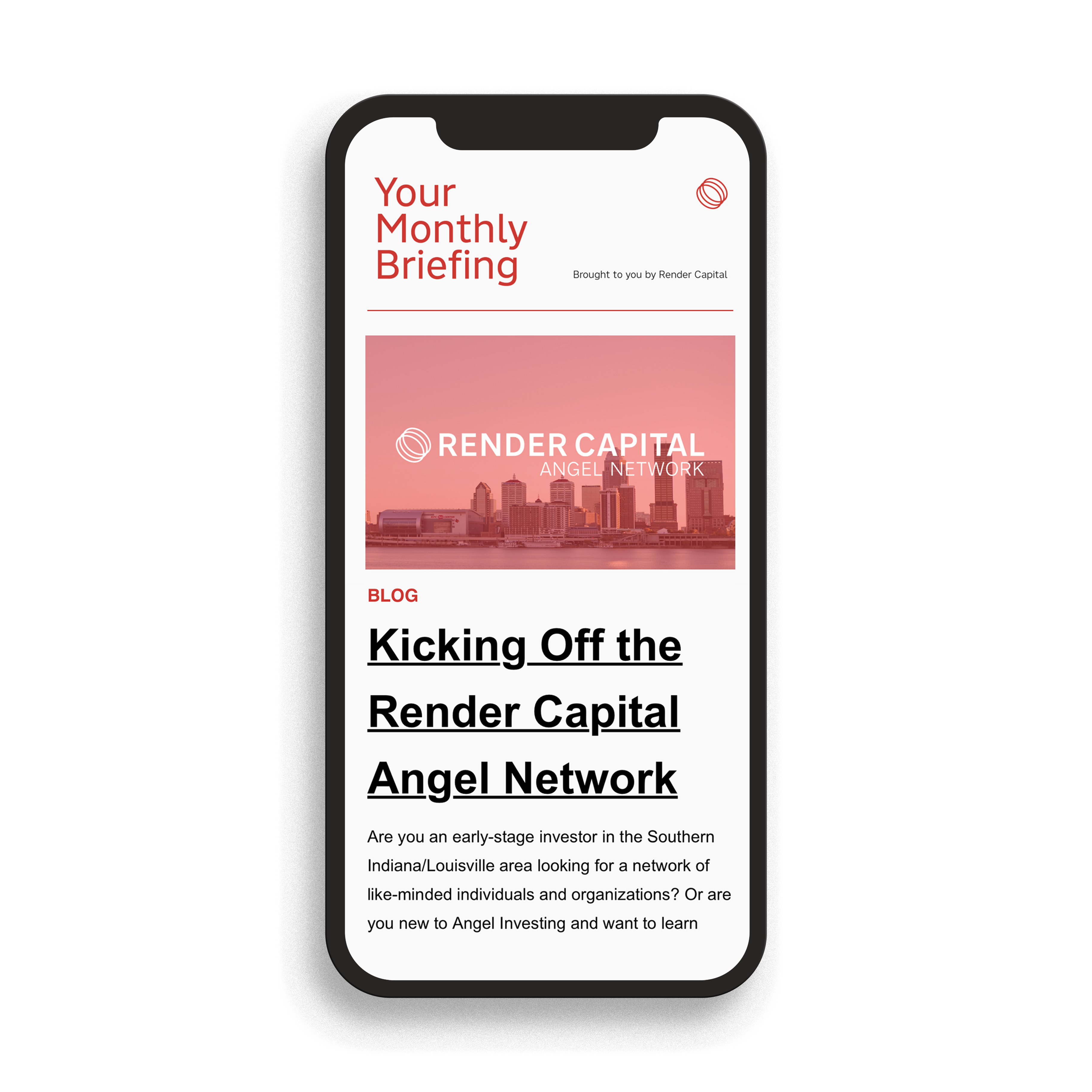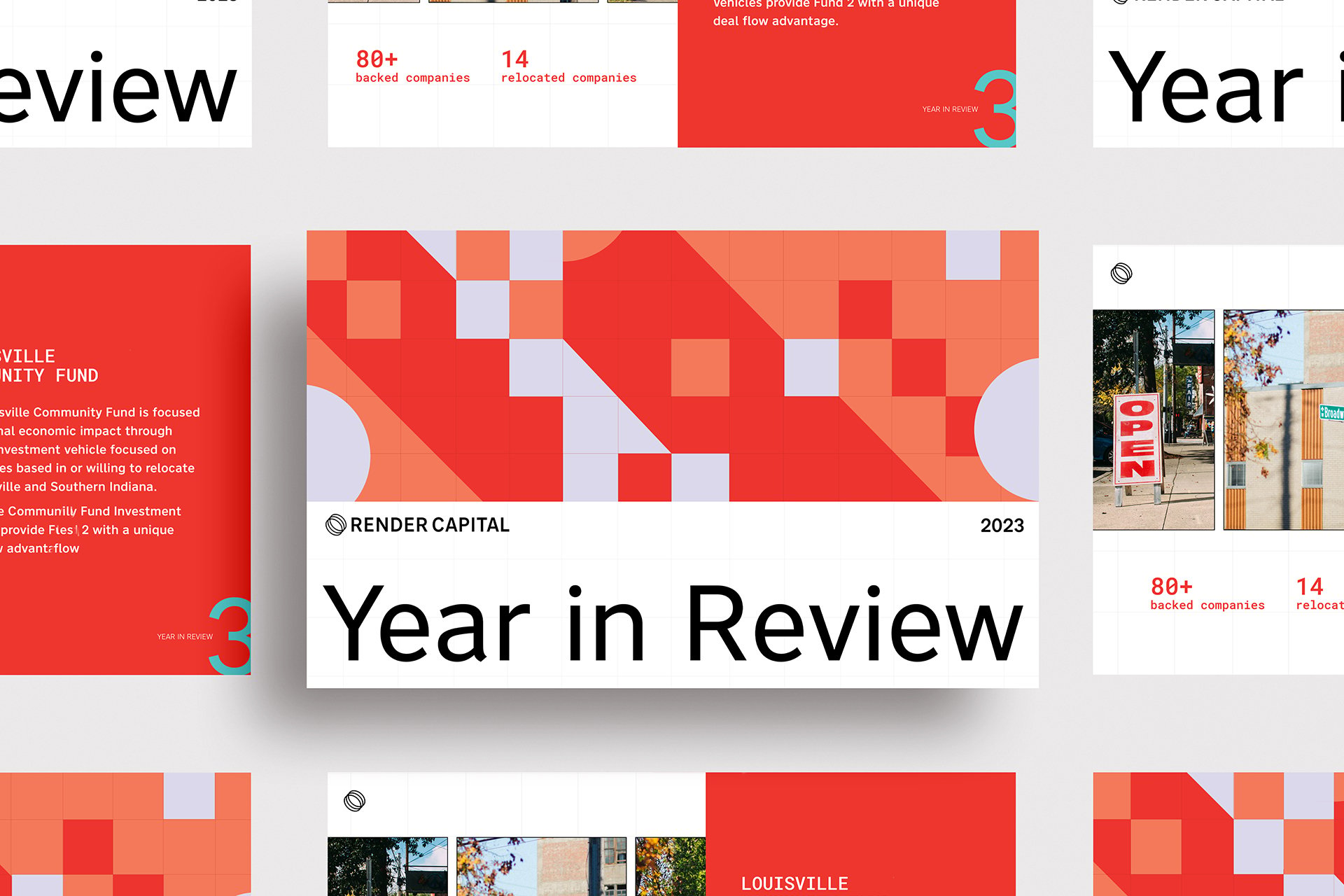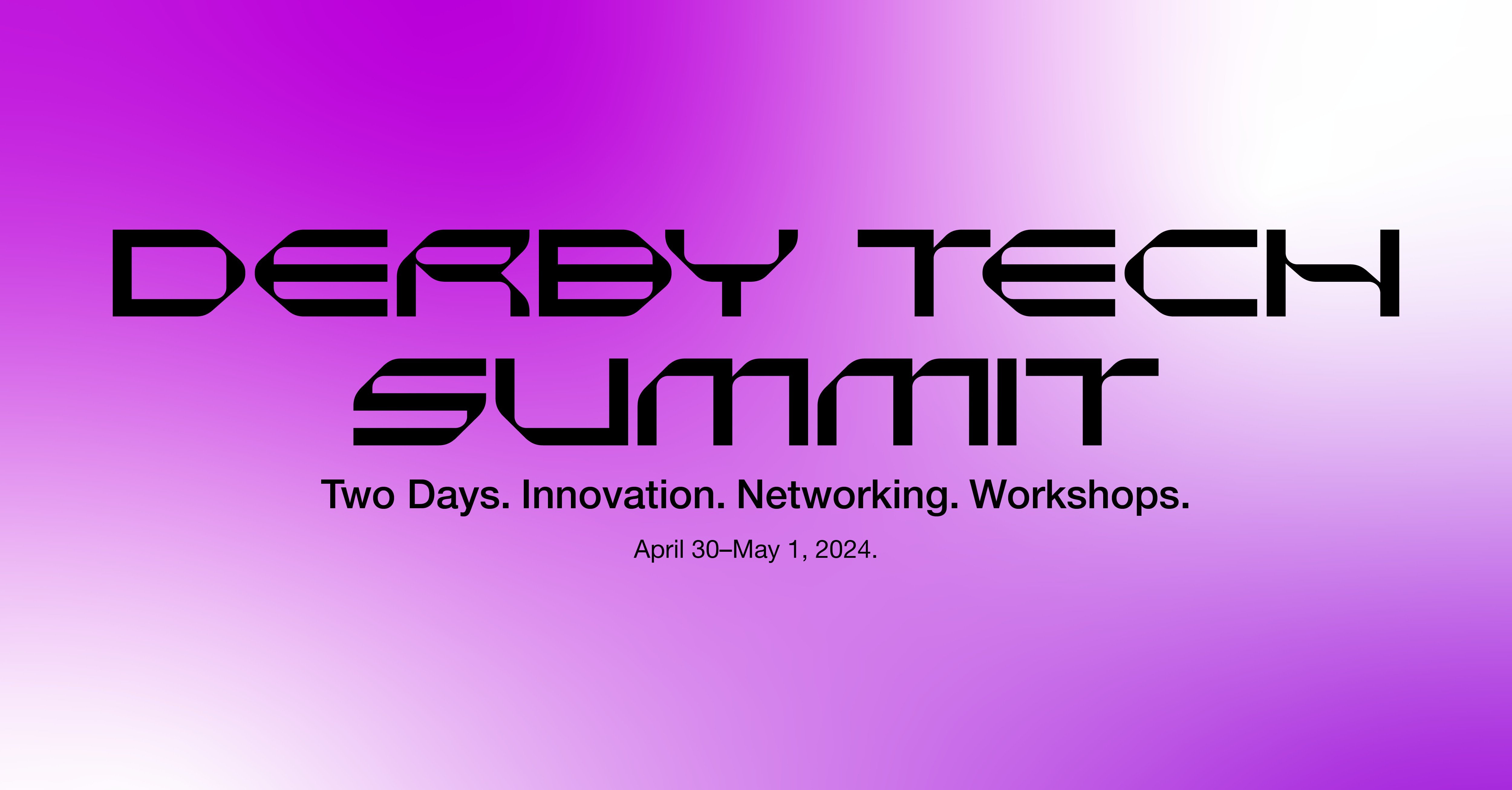On the Render Capital blog, we’ve talked a lot about a founder’s fundraising journey and how to engage with investors. One of the critical elements of a successful fundraise is strategic and intentional preparation ahead of meetings with potential investors. Oftentimes, securing a meeting with an investor in the first place is so difficult, that it might be tempting to start celebrating and coast into the first meeting with little thought. However, first impressions matter in the fundraising world, and ultimately, the way that a founder presents him/herself and the company will have a significant impact on attracting funding.
Before getting into the best tactics for meeting preparation, it is important to state that the very first step before one even begins reaching out to investors is to determine the company’s ideal funding plan. First, decide whether your company even needs to raise external capital or if you can bootstrap until a certain milestone is reached. If external capital is needed, then the next important step is to figure out what type of capital your company will target. Not every company aligns with venture capital, and sometimes it might be better to target government or grant funding, angel investors, pitch competitions, accelerator programs, or even debt or alternative financing. It is wise to spend some time researching which type of capital best suits your company based on your business model, current stage, and growth strategy.
With that said, for the purpose of this article, we will focus on how to approach a meeting with a venture capital fund. Further, we will discuss a hypothetical meeting with a venture capital fund that has the potential to make an investment in your company versus a meeting with different goals such as a friendly meet and greet with the hopes of building a relationship for a future fundraise or a general meeting seeking guidance and mentorship. As a high-growth startup going after a huge market, once you’ve identified that venture capital is the best funding plan for your company, you will start reaching out to target investors with the hopes of securing an initial meeting.
Preparing for your meeting with a VC
Now that you’ve secured a meeting with a venture fund, it’s time to prepare. First and foremost, if you’re starting to meet with investors, make sure you and your team have thoroughly compiled all of your company materials, including pitch decks, financials, team information, metrics, roadmaps, etc. You’ll likely be in fundraising mode and setting up tons of investor meetings, so you want to make sure all of your materials are already prepared and organized nicely in a data room (check out “What Do I Include in an Investor Data Room” by Kolade Aderele).
Next, any founders who are attending the meeting should spend some time learning about the particular fund that you are meeting with. It’s important to get a feel for the fund’s mission and investment thesis through its website and marketing materials as well as through any third-party reviews or industry databases. Also, research the backgrounds of the team members you are scheduled to meet with, keeping an eye out for any common interests or mutual connections to discuss. As with any new business relationship, It never hurts to connect on a personal level and ensure that your meeting is memorable amongst the many pitch meetings that the venture investor takes. After doing research on the fund and team, identify any questions or gaps in information you would still like to gather and write them down to ask during the meeting.
Preparing before investor meetings is crucial, but your approach during the meeting itself is paramount.
Preparing before investor meetings is crucial, but your approach during the meeting itself is paramount. Of course, all investors have different ideal agendas and outcomes when connecting with founders, but there are some elements that you want to keep top of mind, as a founder, to make sure that the meeting is productive and beneficial for your own sake and for the sake of the company’s fundraising efforts.
Confirming Investor/Company Alignment
Now that the meeting has kicked off, the most important thing to do from the start is to ensure there is mutual fit between your company and the venture capital fund. There are several factors that could impact a fund’s ability to invest in your company:
- Fit by fund lifecycle and deployment timeline. Is the fund actively making investments? Or is the capital deployment period over and the investor is in portfolio maintenance mode?
- Fit by investment thesis. What is the fund’s investment thesis or focus area?
Some funds develop a specific thesis around a market opportunity relating to the team’s domain expertise, the desires of the limited partners, or a specific prediction around a certain technology’s ability to significantly disrupt current systems or practices. An investment thesis can also be defined by criteria such as:
- Fit by company stage. For example, does this investor stay away from early stage deals and only invest at the growth stage? Does the investor only participate in deals before Series B?
- Fit by industry. For example, does the investor only consider investments in companies building technology in the healthcare space?
- Fit by business model. For example, does this investor focus on companies with a specific model, like B2B SaaS?
- Fit by geography. For example, does this investor only consider teams with a presence in a certain region, such as the Midwest?
- Fit by founder demographic. For example, does this investor only consider investing in founders of a certain demographic, such as the often overlooked and underinvested female founder demographic?
As you can see, there are several ways in which an investor can narrow down the exact type of investments they are looking to make. As a founder, you should ask the fund representatives to describe in their own words what they are looking for in potential companies, as well as to confirm that your company is aligned with their criteria. If you determine that it is not possible for the investor to participate in your fundraise at this time, it would be wise to adjust your planned meeting agenda accordingly, and perhaps use the time to ask for general feedback on the business or request advice around your fundraising plan.
Avoiding the Monologue
Once you have confirmed there is investor/company alignment, now you can really start talking business. This is where it is wise to follow the lead of the investor, proposing an agenda and asking what would be most helpful for their evaluation process. You want to make sure this meeting is productive for both parties in that it helps the investor determine if your company will enter their formal due diligence process and that it also helps you to determine if this is an investor that is able to participate in your fundraise and one that you find compatible.
One very common approach that some founders take, that is quite unhelpful to the productivity of a meeting, is to launch directly into a pitch deck and give a 10-20 minute generic monologue of why their company is superior for x, y, and z reasons. This is not to say that pitch decks are not helpful in securing investment – in fact, they are essential. Rather, it is important to determine the right time and place for giving “the pitch” and letting the investor confirm their preference. For example, the investor might have already gathered enough information on your company through your introductory email or through your company website, and would prefer to use the time asking specific follow-up questions. Or, the investor might prefer to start with the fund’s screening questions and really ensure that there is alignment before proceeding, while knowing that they have access to your pitch deck in the data room to review at a later time.
Venture capital, especially at the earliest stages, is very focused on investing in people.
It is also important to take adequate time to introduce yourself and the team, detail your fundraising plan and timeline, and learn more about the investor before giving a pitch. To reiterate what was stated in the above section, it makes much more sense to confirm mutual fit before spending your valuable time delivering a pitch to an investor who can’t participate in the fundraise regardless of what is conveyed in the deck. Also, the pitch delivery and ensuing conversation will go over much better if the two parties have gotten to know each other a bit without it being so transactional. Venture capital, especially at the earliest stages, is very focused on investing in people. The character and experience of the founding team is a heavily weighted factor, so be prepared for an initial meeting where you’re just learning about each other before even discussing the company’s prospects. This approach is also good news for the founders, because it allows you to simultaneously vet the investor and make sure they are the right long-term partner for your company’s growth. It is a common expression in the industry that “venture capital relationships last longer than the average marriage,” so you want to make sure that potential investors are checking your boxes too. Of course, this is something that unfolds throughout the whole diligence process and luckily both parties have plenty of time to assess each other.
All in all, once investor/company alignment is met, then let the meeting take its course based on signaling from the investor. Rather than jump into an unsolicited, formal pitch, strive to tell your company’s story in the most digestible manner based on the investor’s own evaluation process. Oftentimes, a conversation-style approach is preferred. Each investor will have their own process, but if the meeting leads itself to a full-fledged pitch or Q&A session, you’re going to want to make sure you are ready to shine.
Sharing accurate and compelling company information
There are countless blogs out there about how to hone your pitch or how to deliver a compelling company narrative, so we won’t spend a lot of time here. However, being prepared to answer one-off questions or explain tactics is critical to a successful investor meeting. As mentioned previously, you are ideally entering any fundraising conversations with an organized and thorough data room of some sort that you can reference during the meeting. The metrics and company information that you’ll focus on will typically depend heavily on your stage, industry, business model, etc. For example, if you’re at an early stage, investors will typically spend more time trying to understand your early validation and trying to get a sense of the founding team’s experience and dynamics. As you grow into later stages, investors will be very focused on how things are scaling, how revenue is growing, and digging into the drivers of various startup metrics. Basically, make sure that you know your company’s story and growth strategy from top to bottom, and if the investor asks about something you do not know the answer to or have not prepared, that is okay, just be clear about where you think you stand and offer to send estimates afterward.
Mutual understanding of the next steps
Finally, before leaving the meeting, make sure you get a clear understanding of the next steps. Make sure you understand if you’re officially being brought into the due diligence process and if so, ensure the investors have all the necessary materials to start their analysis. Prioritize any deliverables you owe back to the investors above all else – the faster the diligence process starts, the faster you’ll be getting a check. Ask the investor to clearly outline the steps in their diligence process and clarify where you currently stand, as well as the timeline for various milestones and a possible close date. Also, make sure you are aware of the possible range in check size. As you wait for the diligence to progress, balance conversations with other investors and strategize on possible syndicate arrangements. Ideally, you’re balancing all these potential investors on similar timelines so that you can structure the close of your fundraise as you prefer (although maintaining this balance is not always something a founder can control).
In summary, every investor will approach a meeting with a different agenda and outcome in mind. To ensure that you have the best chance of success in securing an investment for your company, make sure you approach the meeting by 1) compiling company materials and organizing a data room, 2) researching the fund and the individuals you will be meeting with, 3) confirming alignment between your company and the investor, 4) sharing a compelling company narrative, only after determining that it is the appropriate time and place to do so, and 5) confirming your status as a candidate for investment and clarifying the next steps.
At Render Capital, we strive to ensure that meetings with founders are beneficial for both parties by clearly outlining our criteria for investment and offering feedback and advice where we can be helpful. If you’re a founder wondering if Render Capital might be the right investor for your company, please reach out and we’d love to meet!
.png?width=2708&height=560&name=2022%20Render%20Capital%20Red-04%20(4).png)





